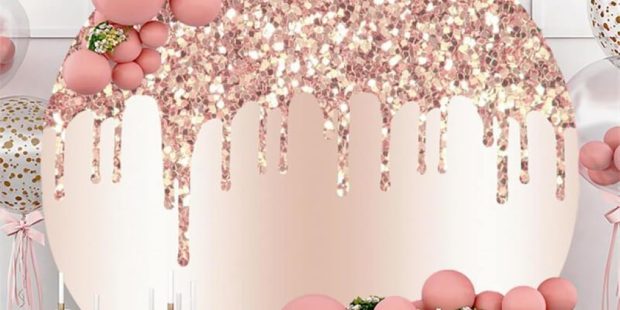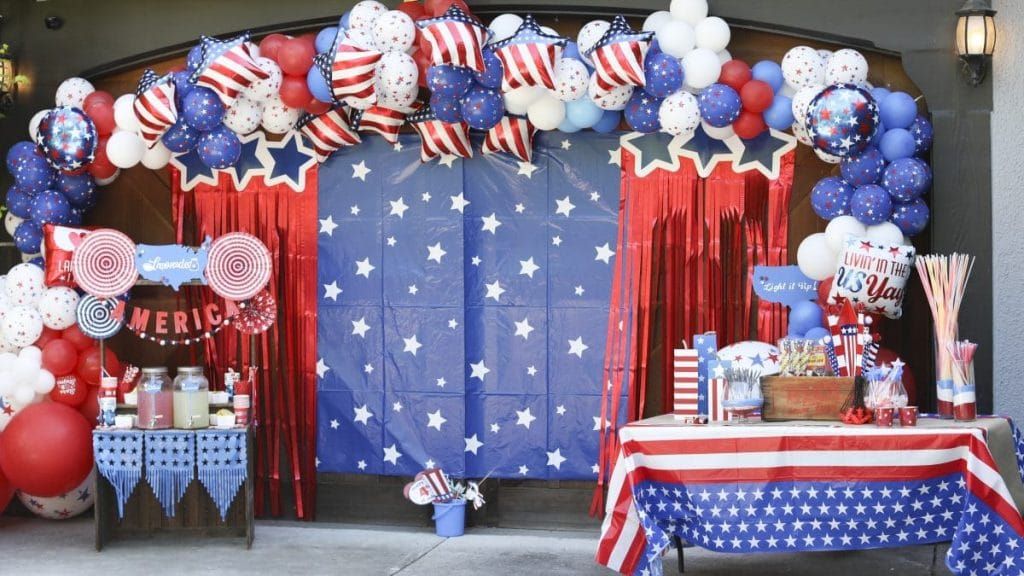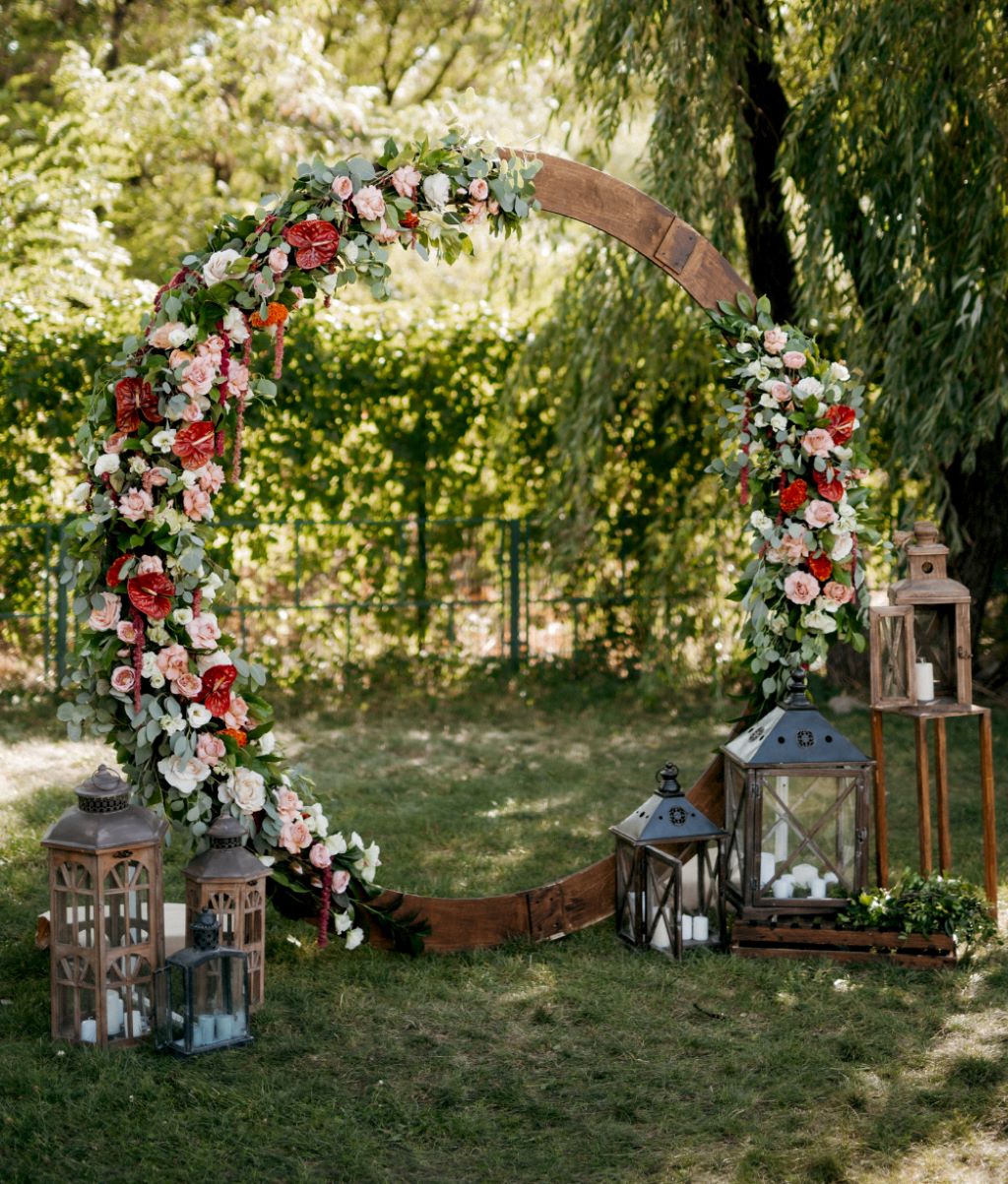
Hey party people! If you’re looking to elevate your next celebration without breaking the bank, creating your custom party backdrop can make a stellar impression. But fancy backdrops need sturdy stands to shine. Don’t stress if you’re not exactly Bob the Builder—with a little DIY gusto, building a backdrop stand support system is doable. I’ve put together this handy guide covering foolproof ways to construct functional stands for backdrops of all sizes and styles. We’ll review techniques using materials like PVC pipe, wood, ladders, and scaffolding. Many options take minimal assembly for a big visual impact. And the best part? Most materials needed can be found affordably at your local hardware or home improvement store. Let’s get started! Below I’ll walk through various stand styles from quick and simple supports to more advanced structures. Weigh the options and difficulty level to pick your backdrop display approach. Pipe up the fun with the perfect backdrop base for your blowout!
Lean and Mean: Basic Backdrop Braces
If whipped up in a pinch, the easiest route for backdrop stands takes advantage of items already on hand. Clever repurposing is key for cheap and chic solutions!
Here are two straightforward methods involving supplies you may have lying around:
Ladder Backdrop Stands
Got an old A-frame ladder in the basement or garage? Voilà—instant backdrop bracing! Simply lean your choice of fabric against the ladder. Drape, pin, or clip your backdrop material securely to the rungs. Make sure to stabilize the base so your display doesn’t tip over mid-party.
Household ladders work in another way too. Place two ladders parallel, laying horizontally. Then clamp backdrop poles into the rungs of each ladder to hang your scene setter from. Add weight to the bases or anchor with bungee cords to prevent mishaps.
PRO TIP: For larger backdrops, connect two ladders together end-to-end. Or opt for big extension ladders to extend your backdrop width.
Stacked Chairs
Basic folding chairs become a makeshift stage for backdrops when cleverly arranged. Simply place two chairs back-to-back. Then top them with one or two more chairs facing outwards. Use clamps to attach poles across the top of the chairs. Drape your backdrop over the upper pole and span fabric across.
Layer chairs in this alternating formation as high as needed to reach your backdrop height. I don’t recommend exceeding three stacked chairs though for safety and stability. But the three chair tower framed my 10-foot wide scene setter splendidly on a dime!
Pipe Dreams: DIY Backdrop Stand Frames
For a more polished backdrop presentation, fabricating a stand from scratch shows effort. Don’t sweat limited carpentry skills though—PVC pipe brings the construction within reach!
Custom length cuts combined with corner joints build sturdy scaffolding for all backdrop dimensions. And disassembly afterwards stores neatly until the next bash. With the right cement and router tips, builders of all levels can pull off a sensational, enviable framework to hang their backdrop dreams on.
Let’s review how to fabricate two hot backdrop support structures through smart PVC assembly. Both deliver dynamic dimension to center stage any backdrop lining for all eyes to admire!
PVC Pipe Backdrop Frame
Simple straight cuts of 1-inch PVC pipe pieced together erects a blank backdrop easel prime for draping. Right angles join the pipes with corner elbow joints to form a giant rectangle. Removable couplings allow sliding poles out for storage when the party winds down.
Measure and mark pipe cuts based on the backdrop size desired. A 10’ wide x 8’ tall backdrop would need at least an 11’ wide x 9’ tall frame for pulling fabric taut across. Secure joints with waterproof cement or joints designed for thicker pipe fitting.
Use corner elbow brackets, T joints, or 4-way crosses to link vertical and horizontal pipes flush together. Three-way corner joints add extra stability too.
Insert backdrop liner poles through the top or front of the frame to hang fabric from. Drape and draw material smooth and wrinkle-free across the rear frame. Then viola! Your backdrop display looks gallery-worthy and guests impressions will shine.
PVC Pipe Archway
Amp up the elegance by shaping pipes into a magnificent archway. The curved structure adds height, depth and focal flair over flat backdrops. Architecture pros execute impressive arch forms with complex math and tools. But here’s an easy geometry equation for nailing graceful arches using basic PVC.
Grab two 10’ pipes and two 5’ pipes to form the sides. Connect a T joint at each end of the 10’ poles. Attach the 5’ poles vertically into the Ts, with the ends sticking above and below. Then grab four 3-4’ poles and bend gently by heating over a stove or with a heat gun. (Use heat protection gear of course!)
Align the curved pipes between the vertical poles in a rounded arch shape. Secure snugly with joints and waterproof adhesive at each end. Insert a long horizontal pole across the highest point to hang a showstopping backdrop that frames any event. Visitors can even walk under the arch for striking photo ops!
PRO TIP: For extra stability securing arch joints, drill holes through connecting poles. Then thread zip ties or metal wire tightly between them.
Now the framework fun really revs up! Let’s move from PVC pipe to wood works of art for flaws-free backdrop fixtures…
Wood You Like To Know: Building Backdrop Supports from Scratch
Braving backyard builds using simple wood boards adds a rugged yet refined element. Constructing the bones of a backdrop stand takes patience and precision. But finishing with polish promises guests won’t know it’s homemade!
Let’s review two options using basic boards. One is collapsible for compact storage after parties wrap. And the other makes a heavy-duty display primed for grander galas. Both foundation plans serve up backdrop realness econo-style!
Hinged Plywood Backdrop Frame
Opening and closing plywood like a book creates a temporary yet durable display easel. Cut two 4’x8′ plywood sheets in half for two 2’x8’ sections. Secure boards together along the 8’ side with hinges, allowing a folding motion. Attach sturdy diagonal crossbeams across the interior sides with screws to prevent racking when open.
Stand the halves upright about 6 feet apart at a wide angle. Install eye hooks along the top exterior edge. Thread a steel cable through them across the full 16’ width. Drape your backdrop over the cable to conceal the base while keeping the form upright and aligned. Collapse the entire display flat like closing a book when finished.
This hinged solution transports easily in a pickup truck and stores neatly against a wall or fence. Simply unfold, fasten stabilizing sandbags on the feet if needed, then cable up eye-catching backdrops in minutes!
Heavy-Duty Wooden Backdrop Frame
Building an indestructible wooded masterpiece makes backdrops the permanent main event. Construct an enormous rectangle from 2×4 stud boards screwed tightly together. Nail plywood panels into the backside for added stability and wind resistance if positioning outdoors.
Cut pairs of vertical beams taller than the finished height by 6 inches. Then notch identically at the top ends so panels rest inside snugly. Secure them parallel along the upper frame using corner braces and wood screws driven through adjoining boards. These notched header beams display backdrops tautly across any width like a canvas in a professional painting frame.
Insert eye screw hooks along the front header to hang backdrop liner and lighting gear from. Conceal unfinished base boards with arrangements of hay bales, planters, tables, or podiums. With hefty wooden framework supporting your curtained creativity, the scene is set for blockbuster blowouts!
Rise to the Occasion: Building Backdrop Stands on Stilts
Scaffolding raises backdrops to stratospheric heights, ensuring your focal points shine. Constructing towers on stilts operates like building blocks. Stack, secure, then climb up to next level greatness!
I’ll guide you on erecting two types of tall backdrop structures sure to help your decor soar. One uses household materials in a creative lift. The other follows standard scaffold protocol arranged by the book. Both highlight backdrops in the spotlight where they belong.
Let’s reach for the sky!
Repurposed Furniture Backdrop Towers
With leftover ladders and some scrap lumber, this technique literally elevates backdrops overnight. Arrange ladder components into two towers with sides of a wooden cube framed around them. Align ladders opposite each other so the backdrop can span the full width when draped across horizontally.
Drive long stakes through the outside base of each tower to anchor firmly in grass or dirt. Stabilize by screwing boards across front and back sides too. Then deck the tops out with plywood sheets to create flat platforms.
Use your towering head start to showcase aerial acrobat performances! Or project light patterns from atop onto sheer fabric backdrops for a cosmic look. However you utilize the lofty view, your decor shines brilliantly from above when propped professionally.
Constructing Scaffold Backdrops
Mimicking Stagecoach scaffolds brings big-production vibes on a DIY budget. The secret lies in the multi-level raised decks they create. Align scaffolding planks in ascending sections with guardrails securing each stage. Then tow backdrop fabric to the top with pulleys for an A-list affair even Hollywood would approve!
Follow manufacturer assembly guidance to stack scaffold frames properly. Make sure to lock wheels and secure the towering form on all sides before ascending. Use extra wooden supports underneath for anchoring on softer surfaces. Then start decorating your vision one level at a time till a masterpiece emerges!
From polls and frames on solid ground to contraptions touching clouds, constructing your own backdrop stand creates a customizable fixture. Build to suit any theme or scene size without restrictions. Your imagination peaks while spending bottoms out. Now let’s cue the final FAQ fireworks on the mechanics behind DIY decor!
Frequently Asked Questions
What type of fabric should I use for backdrops on DIY stands?
Lightweight, basic cotton sheeting from home goods stores is affordable and tailors well to custom backdrops. Try out bedsheets, muslin, canvas drop cloths, or curtain lining material on a budget. Medium polyester blends work too. For larger professional sets 20’ wide or more, heavy duty “commando cloth” is the industry backdrop standard.
What hardware connects backdrop fabric to DIY stands best?
Install screw eyes, cup hooks, or heavy-duty staples Alon framework edges. Use carabiners or s-hooks to clip backdrop liner into place quickly without visible damage. Some use zip ties, though those may leave holes. For the cleanest presentation, pocket rod sleeves on the backdrop’s upper rear edge. Secure poles horizontally through them.
How do I calculate measurements for DIY backdrop frames?
Fabric needs to stretch tighter horizontally than vertically for smooth hanging. Add at least 2 feet wider and 1 foot taller to your backdrop size when cutting lumber, piping or purchasing base materials. An 8’x12’ backdrop for example would need a frame built to 10’x13’ proportions minimum.
What thickness PVC piping should I use for backdrops?
One-inch diameter PVC pipe with medium wall thickness provides enough strength to frame most home backdrop sets under 16 feet wide securely. Affix poles with waterproof cement and reinforce joints with elbows, Ts or 4-way crosses. For larger or permanent outdoor sets like arched installations over 20’ wide, use 1 1⁄4” thick walled PVC for maximum stability.
Can I incorporate electrical lighting on DIY backdrop frames?
Absolutely! Install power strips inside the uprights to plug lighting fixtures directly into. Or securely screw bulb sockets, mini LED strips or starburst lights along top pipes pointed downwards. Use metal C-clamps to attach torch lamps anywhere frames allow. Just ensure all wiring is outdoor rated with GFCI circuits to prevent hazards. Extend extension cords safely along the rear so guests never trip over exposed power leads up front.
In Conclusion
Creating DIY stands for party backdrops takes any backdrop from drab to “Ta-daa!” Structures from ladders to handcrafted wooden frames direct all attention towards your dressed up focal points. Mix budget materials like PVC and scrap wood to engineer displays matching any theme or dimension. Or scout used goods lying dormant to fashion inventive structures starring your celebratory fabric.
With the right backdrop brace foundations, crafting showstopping party scenery comes easy as 1-2-DIY! Just decide how much sweat equity and skill level you’re willing to invest for creating Hollywood lookalikes on the cheap. Piece frameworks together with patience and a spirit of adventure, and soon, personalized pizzazz makes any ordinary room extraordinary. Apply the same DIY spirit to your outdoor Thanksgiving decorations, enhancing your home’s curb appeal to invite crowds and fanfare. Take your bows beneath the best backdrop in town, as your DIY skills furnish the ultimate accommodations for a festive and memorable celebration.


